Guide to successful brand positioning, Part 1
Positioning your brand is the art of distinguishing your product from similar ones so that your brand stands out compared to others competing for the consumer’s attention.
Why Position Your Brand?
There are thousands of brands around us, all making promises about their qualities, values, and services – making it impossible to remember them all. Our overwhelmed brains simplify all these messages down to the brightest, shortest and most understandable statements.
Provided the message meets the audience’s wishes and values, the brand has a great chance to gain the consumers’ ‘likes’ and thus win their love.
There are other pros of positioning, specifically:
- Reduced competition as the company becomes a virtual mini monopoly in its segment (Netflix)
- Increasing loyalty among the target audience (Apple)
- And the ability to dictate market price due to the lack of similar services and the high-value offer (Airbnb)
As for the cons, it is worth mentioning the high costs of differentiated production and communication budgets and the possible cannibalization of the product range.
How Does It Work?
Marketers use stereotypes to make it easy for the consumer to distinguish your product or service from the others. They assign specific desired positive associations to the brand that are familiar and understandable to the target consumer.
Ideally, when you ask a consumer about a brand, they should be able to identify in a few seconds what makes the brand different from the others.
It is important to remember that actual positioning is what the consumer himself thinks about the brand and not what its owner or Head of Marketing thinks.
There are several approaches to positioning. For example, when choosing clothes, we can pay attention to their value – expensive or cheap; fashion – modern or traditional; or clothing for specific occasions, like going to a restaurant, playing sports, or relaxing at home.
What Are the Main Positioning Approaches?
There are two basic approaches or groups to product differentiation — the first appeals to our rationality or logic, and the second to our emotions.
Rational (or Functional) Approach
This approach promises to solve the consumer’s problems with specific benefits.
Many marketers consider it to be a short-term approach requiring constant validation and updating product features in response to multiple competitive attacks.
A functional approach is broken down into three types of categories, depending on the product’s benefits and features (Figure 1):
- Core Product Positioning
- Actual Product Positioning
- Augmented Product Positioning
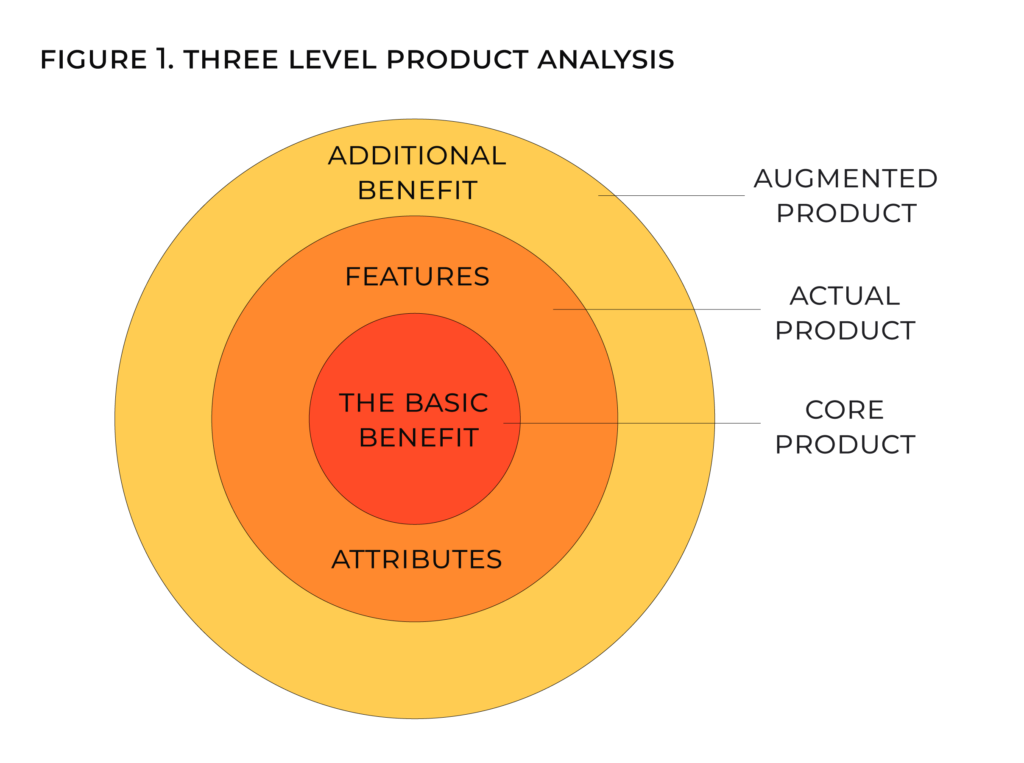
Core Product Positioning
This refers to the fundamental reason why the consumer wants to buy a specific product. When a new product enters the market, this approach helps explain its uses and why the consumer needs it. In addition, big players often use it to claim leadership in a category.
Examples:
Disney provides unique entertainment for consumers seeking magical experiences and memories (entertainment is an essential part of the cartoon industry; cognitive stimulation enhances positioning with a positive experience – see below).
Apple provides cutting-edge technology for tech-savvy consumers who want the top-of-the line laptops, computers, and mobile devices.
Uber: we reimagine the way the world moves for the better.
Nokia: connecting people (communication is a core product of the telecom industry).
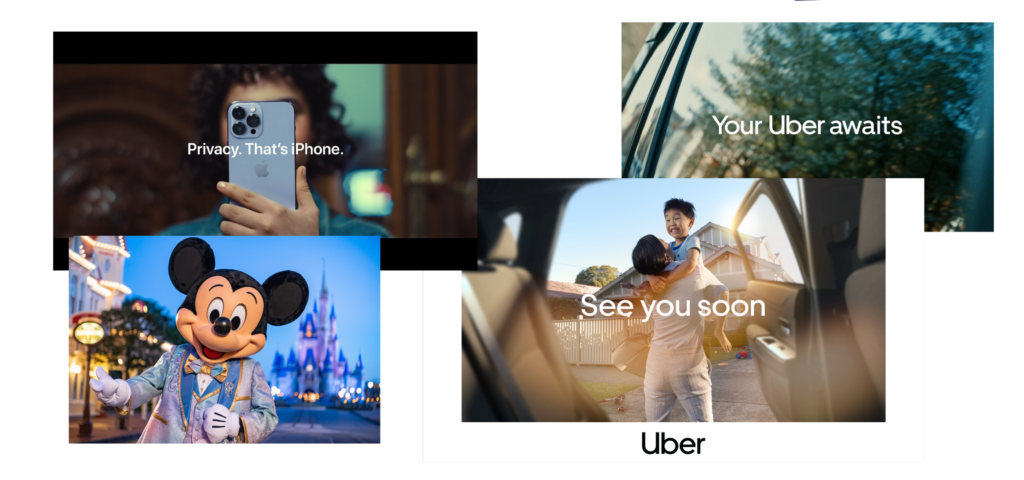
Source:
https://appleinsider.com/articles/22/05/18/apple-d…
https://www.youtube.com/watch?v=ASfhYIyzTQQ
https://www.uber.com/en-AU/newsroom/seeyousoon/
https://insidethemagic.net/2022/05/disney-world-ho…
This type of positioning addresses the key minimum required features that customer expects from a product. It works well in a growing market where competition is still low, but it is important for the company to inform the consumer about the presence of the necessary features in its product. As the market saturates (crystallization) and similar characteristics appear in most of its products, it requires updating to maintain user interest.
Examples:
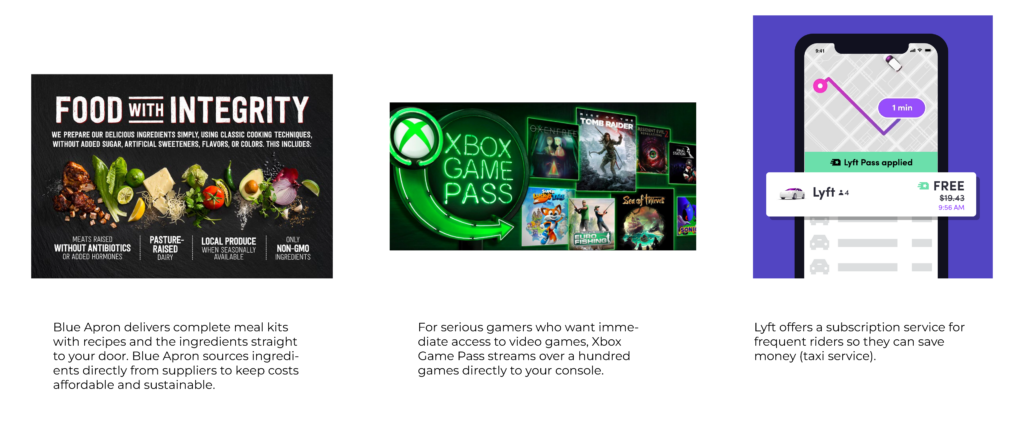
Source:
https://fortune.com/2016/09/24/how-blue-apron-got-…
https://tecnoblog.net/noticias/2022/01/28/microsof…
https://www.lyft.com/rider/lyftpass
Augmented Product Positioning
This approach uses additional benefits and customer services that have been built around the actual product to differentiate it from the other offerings, preferably that competitors don’t have (innovations). The main condition for this approach is the presence of a genuinely new and unique feature in the product, which is difficult to copy quickly and has a long-term demand.
There are two options of augmented differentiation:
- Horizontal – different products for different needs
- Vertical – different products for one need
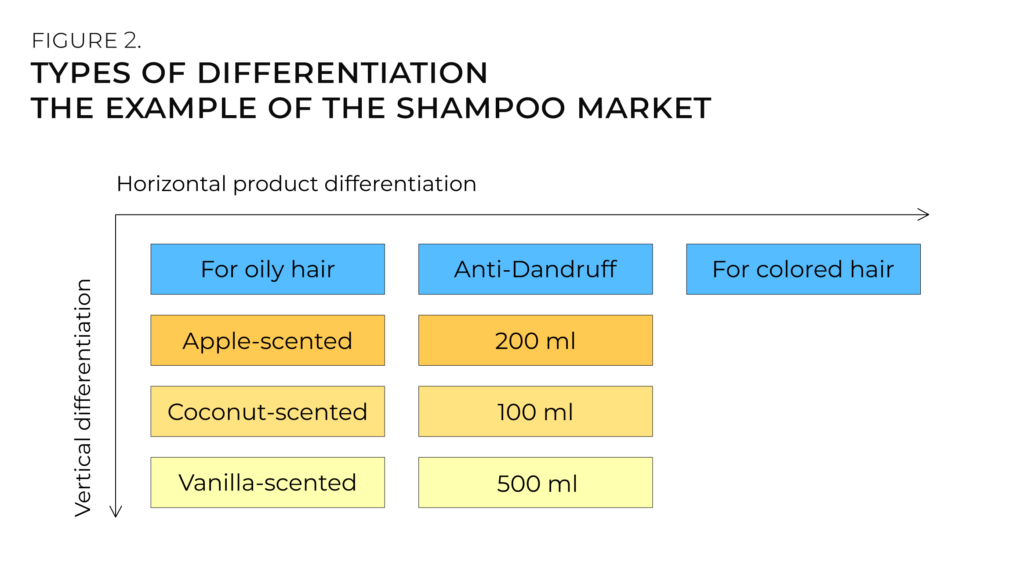
Examples:
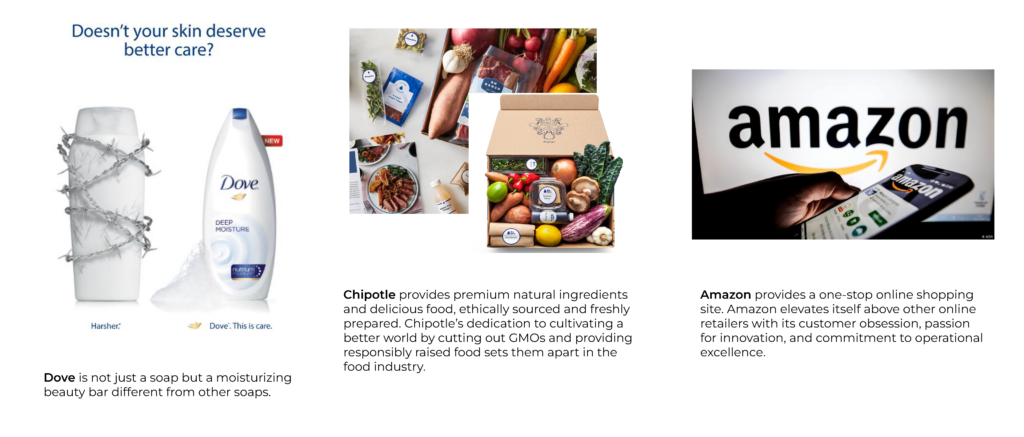
Source:
https://www.insider.com/guides/kitchen/how-to-use-…
http://www.francescotonelliblog.com/blog/2015/07/2…
https://fideliza.com.mx/2020/07/14/tipos-de-campan…
https://www.pinterest.com/pin/250794272974518951/
Emotional (or Image) Approach
This approach involves addressing the consumer in a way that evokes a certain emotional reaction.
It is believed that this type of positioning is more long-term and, with a professional approach, will require less investment. However, it cannot be applied at the early stages of market development when product penetration has not yet reached its critical mass.
There are 2 types of emotional positioning:
- Symbolic positioning
- Positive experience positioning
Symbolic Positioning
When buying and using a brand, the user associates himself with a resonating image close to him.
The messaging uses mechanisms to increase self-esteem, ego identification, and belonging to a group or social lift. Strong or extreme symbolic positioning can elicit an emotionally explosive response like happiness, joy, empathy, etc.
Symbolic positioning, in turn, is divided into:
- Attractive image positioning
- Opposing image positioning
- Niche (or unique image) positioning
Attractive Image Positioning
This is when the brand associates itself with an image the target audience admires. It could be a famous person, a place, another product, a situation, or a social responsibility. The main thing is that the target consumer wants to be like the proposed image.
Examples:
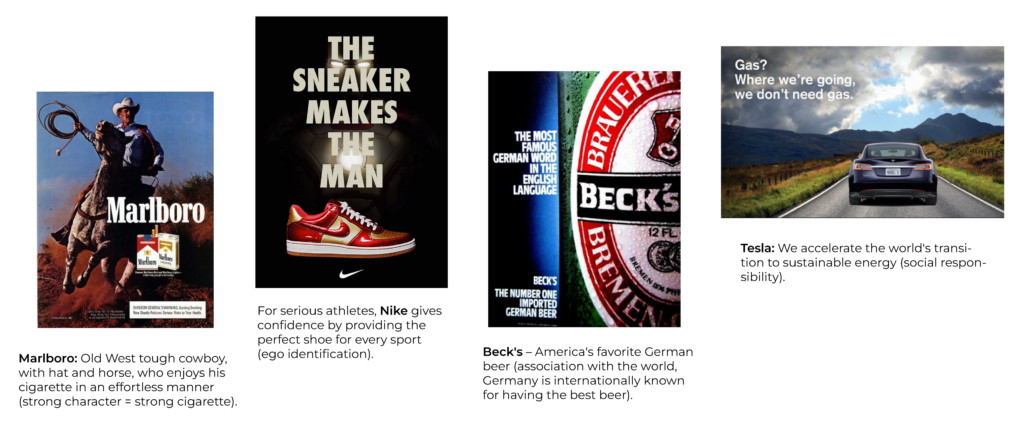
Source:
https://www.pinterest.ru/cowgirlalis/marlboro-man/
https://www.pinterest.com/pin/287808232418875900/
https://www.ebay.com/itm/184103952058
https://www.pinterest.com/pin/329959110174810244/
Opposing Image Positioning
This is suitable for an audience who wants to challenge or oppose themselves to something and be different from everyone. Great for youth brands and companies that compete with market leaders.
Examples:
Avis – we are number two, so we try.
7-Up is an alternative to caffeinated cola.
WLKW, radio without rock music.
Bumble breaks the macho app dating rules with a more feminine touch.
Niche (or Unique Image) Positioning
In this approach, the brand promises to make products only for a selected narrow circle of consumers. An important condition is the presence of a unique, pronounced group of consumers with special preferences or a different way of buying or using the product. It is also crucial that the product has the appropriate characteristics for the chosen niche.
The niche approach is widely used because very few companies can satisfy all consumer segments. However, it has several pros and cons.
Pros:
- Relatively low investment even at high product costs.
- Efficient when market is saturated (Stagnation Stage, see below) and competition is high.
Cons:
- The limit in the market share, no growth beyond.
- Risks of applying a high price when its elasticity is low.
- Inefficient with a small difference between target niche needs and the rest of the market.
- Risky if the attention of large players shifts into this niche.
Examples:
- In the prestige car category, Volvo is a safe alternative (safety is the key niche element, like for families with children or long distance drivers.)
- Johnson & Johnson baby products range.
- Shampoo market: Head&Shoulders specializes in treating dandruff; Garnier Fructis on hair strengthening; TRESemmé to create volume; Organix uses natural ingredients.
- Lester + Company P.C: Expert accounting services and ERP solutions for restaurant chains.
Positive Experience Positioning
This uses sensory and cognitive stimulation using memory, sensation, speech, action or intelligence. It could be based on association with a unique method or way of using. For it to be effective, the company must regularly monitor changes in product usage habits.
Examples:
- Cadbury Roses – Thank you chocolate (situational)
- Beyond what the customer needs, Starbucks not only produces great coffee but also gives excellent store ambiance, free Wi-Fi and a comfortable place where customers can socialize or study (atmosphere at the point of sale).
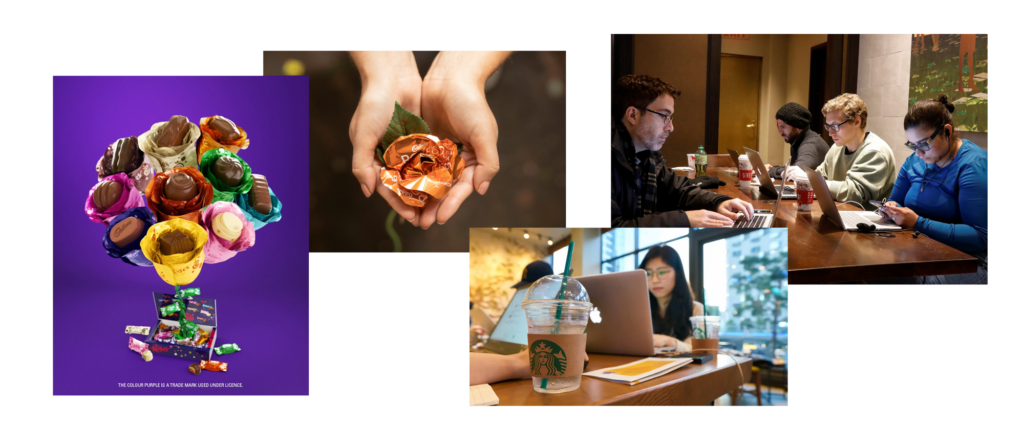
Source:
https://www.c-store.com.au/cadbury-roses-evolution…
https://www.howtogeek.com/731706/how-to-connect-to…
https://www.wsj.com/articles/starbucks-lacks-clear…
https://www.campaignlive.co.uk/article/cadbury-say…
What Are the Rules of Successful Positioning?
In order for the consumer to easily and correctly remember your brand, you must meet three main rules for effective positioning:
1. Be clear, meaning:
- Brevity, easy-to-remember characteristics
- Certainty
- Common at all customer touchpoints
- One positioning per market
2. Deliver real value, meaning:
- Promise the features demanded by the target audience, “not for everyone”.
- Differentiate from competitors (uniqueness).
- If you use the price, there should be another additional feature. Price is a highly ambiguous way of positioning, requiring a company to have guaranteed cost leadership and significant price-sensitive market share.
3. Be confident, meaning:
- Deliver the promise that your company will fulfill (trust, realistic, with RTB – see below).
- Your proposal is long term (for 3+ years).
- Don’t apply a cardinal repositioning (if current positioning is successful, only improve, do not change it drastically).
Companies should be as careful and honest as possible in communicating the benefits and values of their brands. All obligations declared on the market will have to be fulfilled. It is essential to assess your strengths for positioning seriously. When a consumer believes your product delivers what was described, it is named Reason to Believe (RTB).
Ultimately, it only matters what the consumer himself thinks about your product!
Ask him about it more often.
How can we help? Contact SAPHIRA Agency to discuss positioning for your brand.





